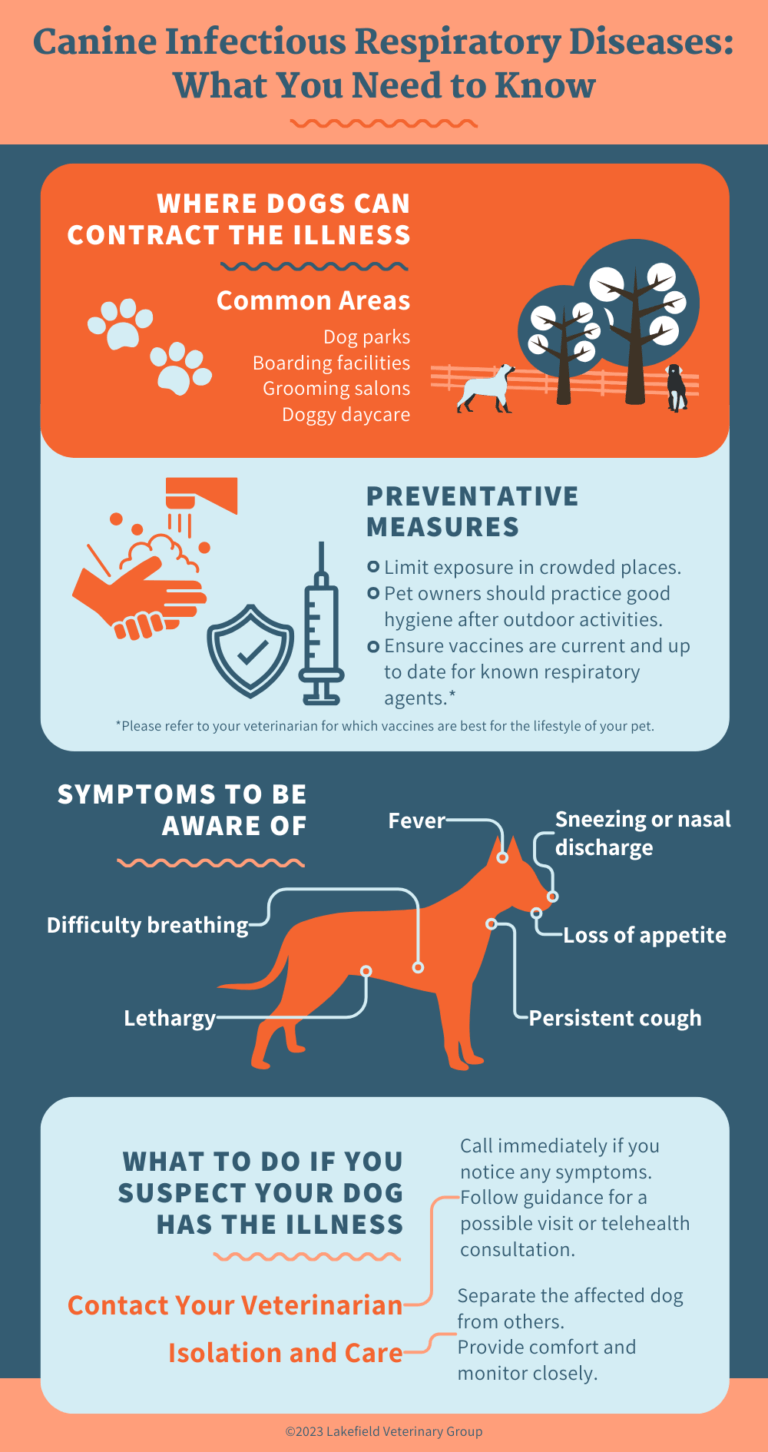
Should you be concerned about respiratory illness in your dog? A mystery canine respiratory illness has been spreading across the nation with occurrences reported in Oregon, Colorado, Indiana, Illinois, Washington, Idaho, California, Nevada, and portions of the Northeast. The symptoms mimic those of kennel cough or canine infectious respiratory disease complex (CIRDC), as respiratory signs including coughing, sneezing, eye and nose discharge, lethargy, decreased appetite, and fever may be evident.
While the exact mode of disease transmission remains unknown, since respiratory signs predominate and cases have been shown to spread quickly among dogs in a communal environment, direct and indirect contact (via spread of respiratory droplets in the air and on shared surfaces) are the presumed main drivers of transmission.
Unlike the more common infections associated with kennel cough and CIRDC, these cases don’t respond to standard medical therapy, and can have a prolonged illness that can progress to pneumonia. If your dog has signs of pneumonia, radiographs of the chest and bloodwork will likely be needed. If pneumonia is confirmed, antimicrobials are indicated.
What should dog owners do?
Consider getting diagnostics done early. Because we don’t yet know the cause of the disease, it might be a good idea to get diagnostic testing done when the symptoms first arise, before starting therapy. That’s because once treatment begins and the immune response kicks in, diagnostic tests (e.g., PCR, airway culture, viral isolation) may not be able to detect the virus or bacterium that caused the symptoms.
Most dogs that get CIRDC recover uneventfully. However, severe disease can occur, so we don’t want to be too dismissive.
My dog is sick. What should I do now?
Consult your veterinarian the following signs are present, a prompt visit to the veterinary clinic is indicated:
- Weakness, severe depression (meaning the dog is really quiet, not engaged and just lies around, doesn’t get up when you’d expect it too (like for food)
- Loss of appetite
- Difficulty breathing (breathing faster and harder even when not exercising)
- Rapid worsening of illness
- Cough that is causing significant problems such as vomiting or making it hard for the dog to breathe
It’s especially important to see the veterinarian if these signs occur in a high-risk dog, including:
- Elderly
- Very young
- Pregnant
- Immunocompromised (by disease or treatment)
- Underlying heart or respiratory tract disease
- Brachycephalic (i.e. squishy faced) breeds
My dog is healthy. What should I do?
Keep your dog healthy by limiting its contact with other dogs, especially large numbers of different dogs with unknown health status. Avoid parks. Dogs should be kept away from any obviously sick dogs.
What about vaccines for my dog?
Vaccines are available for some of the causes of CIRDC. For any dogs that have frequent contact with other dogs, against Bordetella bronchiseptica and canine parainfluenza virus is important. Critically, it is important to use a vaccine that covers both Bordetella and parainfluenza. Canine influenza (flu) vaccination can be considered as well.


